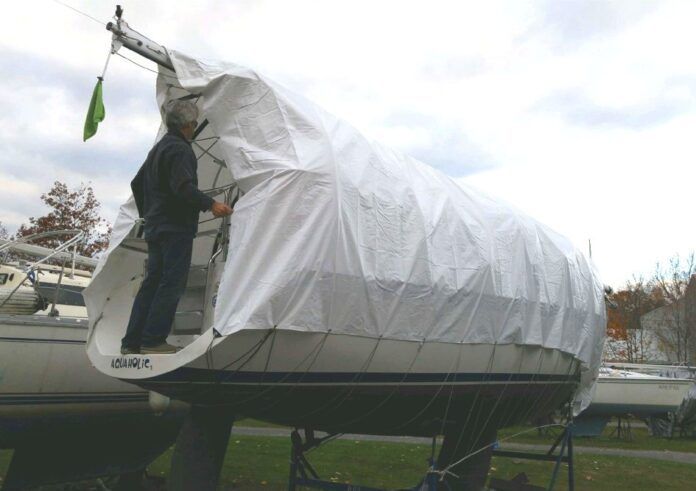
When summer turns into fall, most DIY boat owners start exchanging ideas on how each one proceeds with their winterizing process. This is definitely one of the great benefits and pleasures of being part of a yacht club.
It is of course no surprise that a variety of techniques are used to perform, essentially, the same tasks. However, some use more effective methods while others use somewhat ineffective even bizarre methods, making their process much more complicated than it need be.
Adhering to my personal moto of “work smart not hard,” my objective is made even easier when I follow a custom chronological “to-do checklist” that essentially repeats itself every year. It’s funny how many boat owners forget what needs to be done year after year.
To avoid this, I created separate spring and fall checklists, making sure each task is listed in the proper sequence to avoid having to redo a task that was already done, albeit too soon in the process.
So, I thought I’d share my current winterizing checklist and how I perform each of these tasks. From preparations while still in the water, to step-by-step once the boat is hauled out and on her cradle. I say “current” list because as soon as I add or change something that requires different preparation, I immediately update my checklists. For example, when I swapped my manual toilet to an electric model, it required a different winterization process.
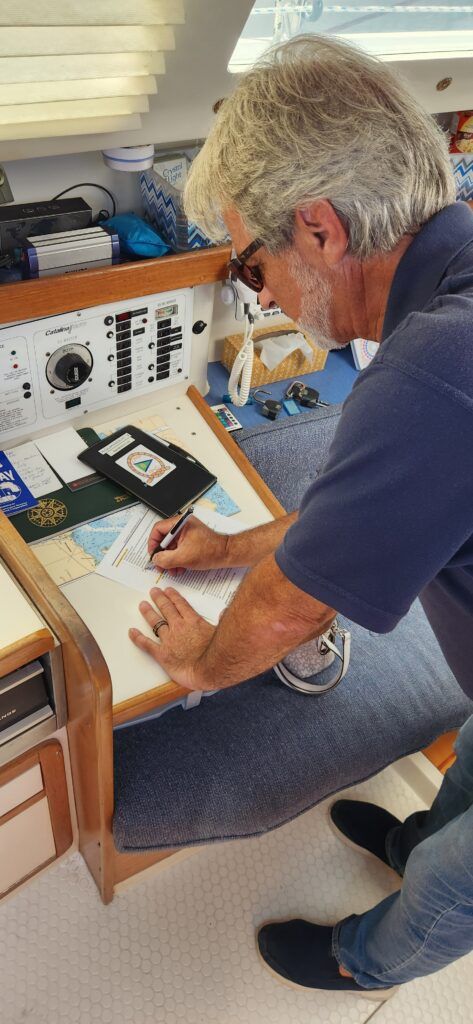
I hope many of you will find this information useful.
You can download a printable version of the “Winterizing Checklists” here.
The winterizing checklist starts while the boat is still in the water and takes you through steps to follow up to the point she’s on her cradle or trailer.
The only important exception to my list is for those with outboard(s). If this is your situation, just before haul out, and after you add a can of SeaFoam to your fuel tank, you should simply disconnect the fuel line and let the outboard run dry. Once the engine has turned itself off, to be on the safe side, crank it a few times to make sure all the fuel has been spent. This helps keep your carburetor, injectors and fuel passages clean and will reduce any problems come spring time. IMPORTANT: If you’re in salt water, don’t forget to run fresh water through the water intake to rinse the engine before you run the engine dry.
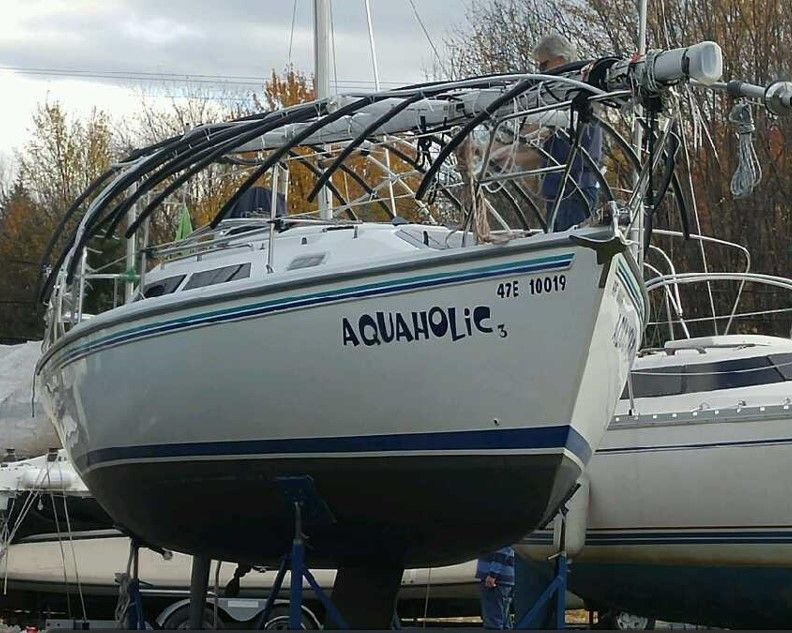
It is also important to make sure you have pumped out and rinsed (multiple times) the toilet holding tank before haul-out. I add antifreeze in the tank by flushing antifreeze via the toilet itself, but never leave antifreeze in the bowl. Using improper antifreeze will prematurely damage your toilet components such as pump seals. Always consult the manufacturer’s and model recommendations for winterizing.
WINTERIZING CHECKLISTS
The following list is in the order I actually undertake these tasks. For example, winterizing the fresh-water system is one of the last things I do before covering the boat. Because I use water to clean and rinse various things in the cabin, winterizing that system last simply make sense.
About batteries. Because my solar panels are always keeping my batteries charged and warm, and thus immune from freezing, I leave my batteries onboard. I do keep the battery switch set to “Both” in order to maintain a good balance between both batteries during winter storage. I also do that during the summer if I will be away for five or more days. If you have a solar charging system or can plug in a trickle charger, like a Battery Minder, all winter, that will work as well.
If not, batteries should be removed, fully charged and stored at home in a warm dry place. Make sure to check and keep them charged up as needed during the winter or install a Battery Minder that will trickle charge the battery(ies) as needed.
IN WATER PRIOR TO HAUL-OUT:
- Remove, inspect and fold sails.
- Remove dodger (clean and properly roll all canvas parts using large tube to prevent windows from bending or folding).
- Remove bimini and frame (clean and roll properly).
- Bring home sails, dodger, bimini, sails and interior cushions.
- Remove boom.
- Remove all lines.
- Lower mast.
- Put all turnbuckles in a large freezer-type Ziploc plastic bags. Lock bag after applying a generous spray of lubricating oil (like WD-40) to the turnbuckles.
- Empty and flush toilet and holding tank (flush tank with fresh water a minimum of 3 times).
- Warm up engine then, change oil and filter.
- Turn off fridge.
ONCE ON LAND, AFTER HAUL-OUT:
HULL, ENGINE AND INSTRUMENTS
- Power wash hull. (Best to do as soon as she comes out of the water before the hull dries too much).
- Clean engine water intake filter.
- Run engine with antifreeze hooked up to the water intake under the boat (with a see-through hose in the intake) until antifreeze runs out the exhaust.
- Shut off engine. Tag the ignition “Winterized. Do Not Run.”
- Clean and inspect engine and engine compartment.
- Top up fuel tank with fresh fuel adding fuel biocide and diesel fuel storage treatment and one can of SeaFoam (to prevent contamination and water condensation).
- Remove instruments at the top of mast and store inside boat.
- Remove, clean and store fenders. Use tire treatment spray to clean and protect fenders.
FRIDGE (or ice box) AND BILGE
- Clean and rinse inside fridge and leave cover off.
- Run some antifreeze via the fridge’s manual foot pump through the drain.
- Run bilge pump as dry as possible.
- Add 2-4 cups of antifreeze in bilge and operate bilge pump a few seconds to run some antifreeze in the pump and line. Also use the manual bilge pump in the cockpit (if so equipped) to run antifreeze through that pump as well.
- Leave balance of (or add) anti-freeze in the bilge.
GENERAL CABIN PREP
- Pack and bring home:
- All remaining food and beverage items, especially anything carbonated.
- Any products that can freeze (galley, bathroom, cockpit).
- All manuals.
- All mooring lines.
- Stand remaining cushions and mattresses.
- Open all accesses (under seats and mattresses areas) to allow air flow.
- Remove wheel and store inside.
- Remove cockpit table and store inside.
- Cover pedestal.
- Spread new Fleecy dryer sheets in cupboard, lockers, cubby holes, etc. (to keep spiders and bugs out).
FRESH WATER SYSTEM AND MARINE TOILET
- Empty fresh-water tank.
- Clean filter at water pump.
- Add minimum two liters of antifreeze in freshwater tank.
- Run antifreeze one faucet at a time, including stern shower, until antifreeze comes out.
- Add more antifreeze if needed. Best practice: capture antifreeze as it comes out of faucets and reuse in water tank.
- Turn water system breaker off.
- Open all faucets to ¾ open including stern shower and leave all thru hulls open.
- Make sure all breakers and propane solenoid switch are set to OFF.
DECK
- Clean deck (I use an automotive cleaner, namely Wash and Wax by Turtle Wax that also has wax).
- Install winter cover framework.
- Cover boat with tarp. Secure tarp with heavy lines.
- Switch battery to BOTH and let solar panels trickle charge batteries during the winter.
AT HOME
- Store sails, cushions, etc. inside in a dry area.
- Clean mooring lines (soak in hot water with 1 cup of bleach for one day. Rinse and soak once more in hot water with fabric softener for a day. Rinse and let dry).
- Store dodger, bimini and full enclosure panels in dry area (with sails).
- BOOK A CARIBBEAN BAREBOAT CHARTER WINTER GET AWAY!





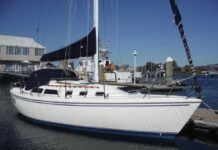







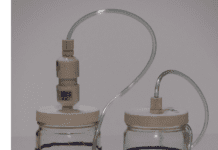
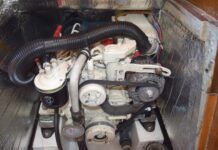
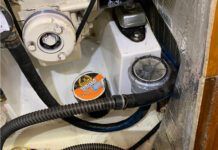

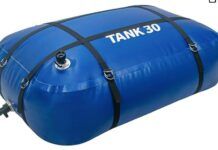













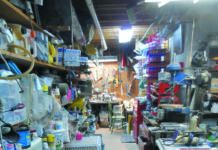
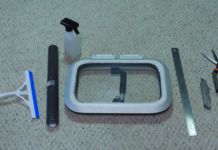





A few small details that might help. All stuff I’ve tested.
Toilet. PG antifreeze will damamge neoprene joker valves (Jabsco heads), but EG (engine type) will not. Also, nitrile jokers, such as used in Raritan heads, are not affected by PG. See PS articles on the topic.
There is nothing wrong with flushing antifreeze, but to protect the vulnerable intake side of the pump, the antifreeze must be pulled in through the intake or at least through a T in the intake hose. Otherwise, you have only protected half of the head. Alternatively, there is a
drain plug in the head.
Fuel Treatment. PS testing shows that Star Tron is more effective than Sea Foam for diesel storage. It works well along side bug treatments, such as Biobor JF. For gasoline, the top choices are Biobor EB, Stabil 360 Marine, and Merc Quick Stor.
Water System. I might suggest a slightly different approach, since rinsing antifreeze out of the freshwater tank is nearly impossible. It just keeps diluting. Also, dilute antifreeze in the water tank often ferments, resulting in nasty tastes come spring. This approach is easier and results in a fresh water tank in the spring.
* Clean, empty and DRY the tank. Use a shop vac. Leave the top open until it is dry. You always put dinner dishes away clean and dry.
* Install the antifreeze in the pump and piping through a T located adjacent to the tank. No antifreeze enters the tank.
* Consider draining the heater and installing a bypass line for winterizing. Most chandleries carry these. A water heater takes a LOT of antifreeze.
* Never put diluted antifreeze in the water tank or any other place. It will ferment over the winter and result in nasty tastes in the spring. A dry tank does not need antifreeze.
Thanks for taking the time to share your experience Drew.
I was not aware of Star Tron product and will indeed look it up. I’ve used SeaFoam, K100 and Biobor JF together for more years than I can remember with great results.
I use plumbing antifreeze that does not damage any plastic or rubber components. When flushing toilet, I do pump anti freeze through the water intake thru hull. But I make sure my electric toilet is free on any residual antifreeze as recommended by Jabsco.
My former life was in the engine coolant industry, with lots of testing and and a few commercial formulations to my name. This is a core area.
In general, plumbing antifreeze (PG) is more damaging to neoprene head parts than EG (automotive antifreeze). The effect of both chemicals on the treatment works and the environment is basically the same and both are consider non-hazardous by the fish and wildlife department. If you check the toxicity to fish and marine life in PG and EG SDS you will find that they are very close, with EG, surprisingly, slightly less toxic. EG is quite toxic to mammals, but not so much to the environment and it breaks down very quickly. Thus, EG is safe and probably preferable for winterizing the head, but not for any system related to potable water.
Alcohol-based antifreeze is actually not bad on rubber parts, but can harden PVC hoses over many years. It evaporates and ferments slightly more quickly, so no thanks.
EG rates excellent for neoprene, nitrile, and plasticized PVC.
PG rates only fair for neoprene and excellent for nitrile and plasticized PVC.
Ethanol rates excellent for neoprene, nitrile, and good for plasticized PVC.
Excellent is what you need for long life, good will work for gaskets and some non-moving, non-stressed parts, and good won’t last very long. Lower ratings generally fail within days or hours.
Winterizing with PG is probably the leading cause of premature stiffening of neoprene joker valves and engine freshwater pump impellers. I ruined a few that way and learned. The effect is remarkable. In fact, there are technical reasons why even in this age of environmental concerns, EG remains favored over PG by all passenger car manufacturers.
It’s a pet subject. Sorry for the long report.